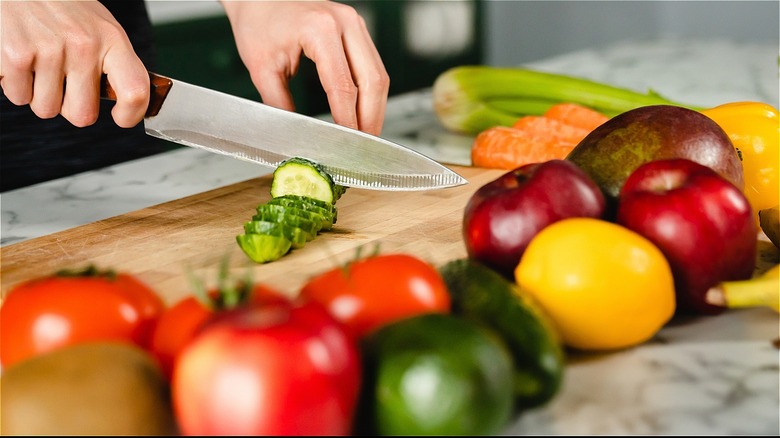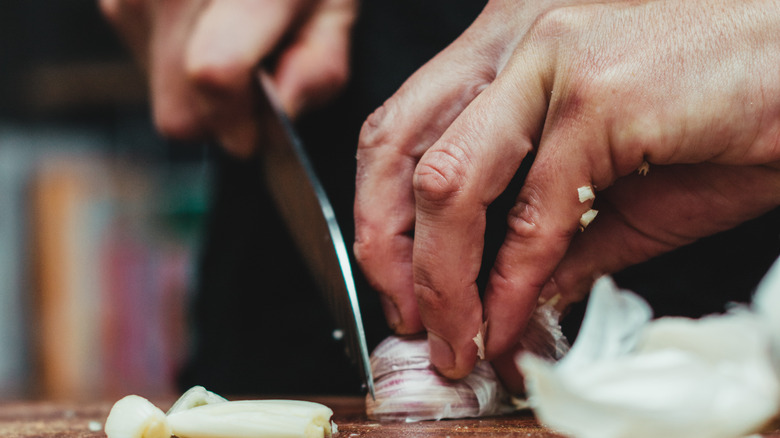The Biggest Mistake When Chopping Anything Lies In The Technique
When you think of knife skills, is an image of Julia Child speed-chopping her way through a pile of onions conjured up? While that speed isn't necessary for home cooking, the same knife skills taught to professional chefs pertain to home cooks.
The proper technique prevents us from cutting ourselves and expedites the dreaded prep work. The more skilled we are, the quicker we can chop, brunoise, or julienne without nicking a finger. Uniformly cutting, whether a protein or a vegetable, ensures everything is cooked at the same rate and can visually elevate a dish. With good knife skills, we are like plastic surgeons removing the bumps and crevices, creating neatly squared pieces that look prettier in everything from salads to stews.
Regardless of what you are cutting or which knife you are using, chopping is a two-handed job. Your dominant hand holds the knife while the other secures the food. The handle should be placed in the palm with the thumb and forefinger gripping the bottom of the blade (the tang). This position allows cooks to maximize their strength and utilize the blade's sharpness while reducing fatigue and balancing the blade's weight in their hands. The supporting hand should prevent the food from rolling by using the "bear claw," curling your fingertips towards the palm with the knuckles securing the food.
Once the blade is comfortably in your hand, it's time to chop. However, there is one common mistake you want to avoid for the quickest and most efficient prep work: not using the proper chopping technique.
A rocking motion is the best chopping technique
When using a straight-edged knife versus a serrated one, the blade should be rocked back and forth as you cut rather than pushing straight down. With the food securely placed on a cutting board, flat side down, push the blade forward with the tip slightly dipped as you apply pressure downward. The curved edge of a chef's knife allows you to rock the knife back and forth as you cut, using your knuckles as the guide as you work towards you.
Some knives, like a Santoku, have a straight edge, preventing a rocking motion. In that case, the blade should be moved in a "sawing" motion, pushing it back and forth. This is also the technique when using a serrated knife — appropriate when cutting bread, tomatoes, and large produce like watermelons.
Although counterintuitive, a sharp knife is safer than a dull one, preventing the blade from slipping and minimizing the risk of injury. A sharp edge also keeps the cook from applying too much force to the cutting motion, making the occasional nick less severe. Knives should be stored in a block or on a magnetic strip to keep the blade sharp, preventing the edges from dinging each other.
Home cooks should hone (straighten the blade) and sharpen their knives approximately every two weeks — or more frequently when dulling. Knives can be sharpened at home or done professionally with a stone or electric machine, and many butchers will sharpen your knives for free.

